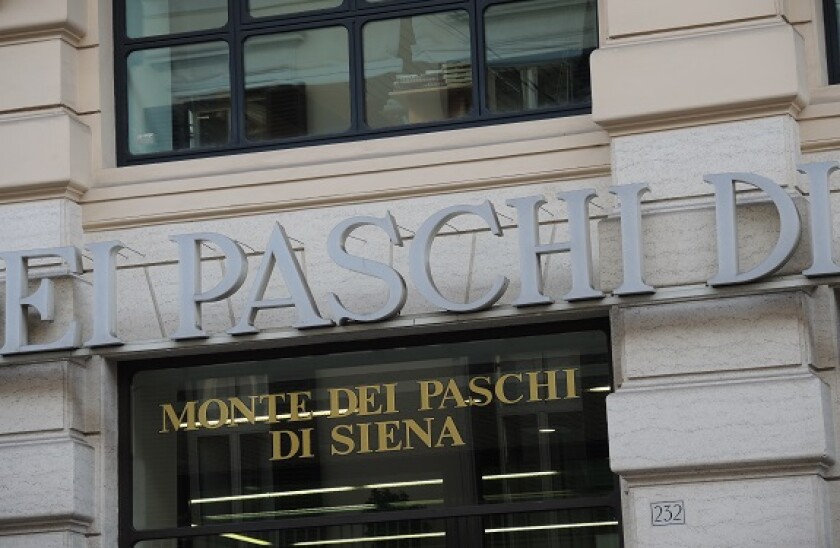Italian banks have been piling into euros at the start of 2020.
UBI Banca sold its debut additional tier one on Monday and Banco BPM quickly followed with a new deal of its own.
UniCredit has now priced three tranches of debt following two trips to the euro market this year — and that's before you start counting covered bonds.
It doesn't take much sleuthing to figure out what's going on.
Investors are clamouring for returns and seeking out risky assets, helping Italian lenders fund themselves at much lower levels than they've been accustomed to in recent years.
Banco BPM priced its €400m AT1 at 6.125%, for example, which compared with 8.75% for a 2019 outing in the asset class.
And UniCredit was able to launch a €1.25bn six year non-call five bond at 135bp over mid-swaps this week, suggesting that its non-preferred senior funding costs have fallen by about 55bp since last June.
These kind of new issuance conditions are crying out for a new deal from Banca Monte dei Paschi di Siena.
The bank has been in and out of the spotlight since it was rescued by the Italian government in 2017.
But it still needs to raise another round of tier two capital to come good on its restructuring plan, agreed with the European Commission.
There will never be a better time to deliver on that commitment.
Monte has been riding a wave of optimism in recent months. Moody’s upgraded the bank’s standalone rating for the first time in seven years last week, for example, lifting it from Caa1 to B3.
The rating agency also moved Monte’s subordinated debt rating up by one notch to Caa1 and spoke about a “positive” rather than a “negative” outlook for the institution.
In the financial markets, the cost of insuring against default on Monte’s five year senior debt has shrunk by 46bp this year to date, according to data from Markit’s iTraxx indices.
And the value of its €750m 5.375% tier two has been surging towards par, jumping to above 92 in cash terms this week.
A bank like Monte does not have the luxury of sitting back and waiting to see if its valuation will continue to improve in the credit market.
One might have been forgiven for thinking that it would be plain sailing for the bank when it sold its €750m 10 year non-call five tier two at a coupon of 5.375% in January 2018.
But a year later the issuer was constrained to raising a further €300m of 10 year tier two debt at a mouth-watering level of 10.5%.
Mote has given itself until 2021 to sell a further €400m of tier two capital, as well as another €1.75bn-€2.25bn of senior unsecured debt and €1bn-€1.5bn of covered bond funding.
With mammoth order books chasing any kind of subordinated paper, now is clearly the time to get the riskiest of those deals out of the way.
The world’s oldest bank isn’t getting any younger.

